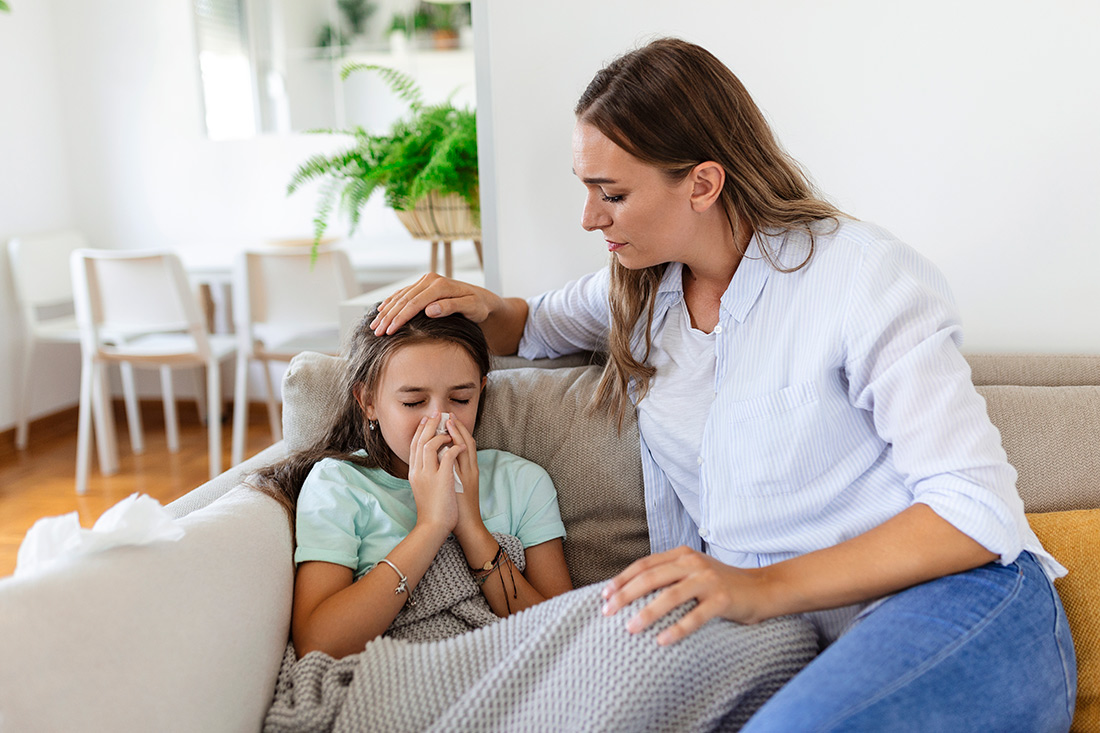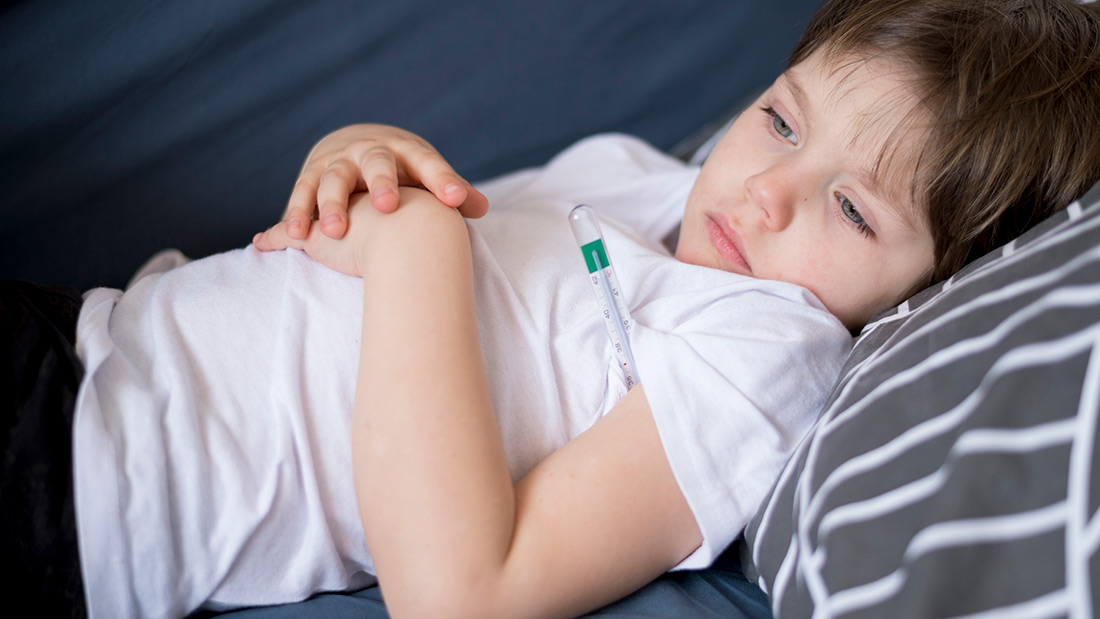
Every parent wants to protect their child from illness. While prevention is important and can make a difference, unfortunately, some childhood illnesses are unavoidable. We offer tips on how to manage the most common childhood illnesses.

The most common diseases - colds and flu
Not catching a cold in the fall and winter is like winning the lottery. This is especially true for children who attend daycare or preschool and have daily contact with their peers. It's easy to become infected in such a situation! The most common symptoms of a cold or flu include a runny nose, a raised temperature, a cough, weakness, and a general feeling of being unwell. In such cases, it's important to keep your child's nose clear. Saline inhalation and seawater spray can help. Colds are often accompanied by a fever, which shouldn't be ignored. In this case, you should give your child medication containing paracetamol – however, their use should be discussed with your pediatrician. Home remedies for coughs include warming raspberry tea, onion syrup, and milk with honey. Remember, honey can be given to children over one year of age and without allergies.
Chickenpox can be prevented through vaccination. It is recommended for all those who have not had the disease. Vaccination protects against severe symptoms and complications, which often result in hospitalization. It also reduces the risk of shingles in the future. It is mandatory for children attending daycare centers and children's clubs, among others.
Chickenpox – the most contagious childhood disease
Chickenpox is an infectious disease caused by the varicella-zoster virus (VZV). It is accompanied by a high fever and a vesicular rash on both the skin and mucous membranes. It is diagnosed primarily in children, who experience a relatively mild illness. A more severe course of chickenpox is reported in adults, who also experience more complications. Treatment for chickenpox is symptomatic. The child's fever should be reduced, and persistent itching can be treated with antipruritic medications prescribed by a doctor. The most difficult task for a parent is to ensure that the child does not scratch. Wounds will prolong recovery, and additionally, scarring may remain. It is crucial to ensure the child is hydrated and provided with rest and relaxation.

Mumps – another common childhood disease
Don't be fooled by the cute name. Mumps is also a disease spread by droplets, and many of its symptoms can mimic the flu. The first symptoms include a slightly elevated temperature and a loss of appetite in the child. Over time, the temperature rises, leading to facial swelling, specifically inflammation of one or both parotid glands. The disease is quite painful, and the child may have difficulty swallowing. Unfortunately, in this case, too, it is a virus. It can only be treated symptomatically, meaning providing the child with an appropriate environment and ensuring hydration. Facial compresses can also provide relief.

Scarlet fever – you can beat it with antibiotics
Its course resembles other childhood illnesses. Scarlet fever is accompanied by high fever, sore throat, cough, vomiting, headaches, and a characteristic raspberry tongue. In the later stages of the disease, a very characteristic red rash may appear, resembling small pinpricks. Importantly, it occurs primarily on the trunk and extremities, as well as in so-called "hot spots"—the creases of the elbows and knees. The disease is usually accompanied by intense facial flushing. Scarlet fever is caused by Streptococcus type A (Streptococcus pyogenes). Treatment involves antibiotic therapy.
Childhood diseases – can they be avoided?
Prevention and vaccinations can significantly protect children from illness. However, it's important to remember that even the most caring parents cannot protect their children from infections. It's important to care for your child during illness, implement appropriate treatment, and surround them with care and understanding. Some illnesses are inevitable, and the sooner we understand this, the easier it will be to survive this difficult time for both parents and children.






Podziel się:
How to choose a gift for a girl for Christmas
New Year's Resolutions for Children and Adults - Do They Make Sense? How Can You Support Your Child in Achieving Their Resolutions?